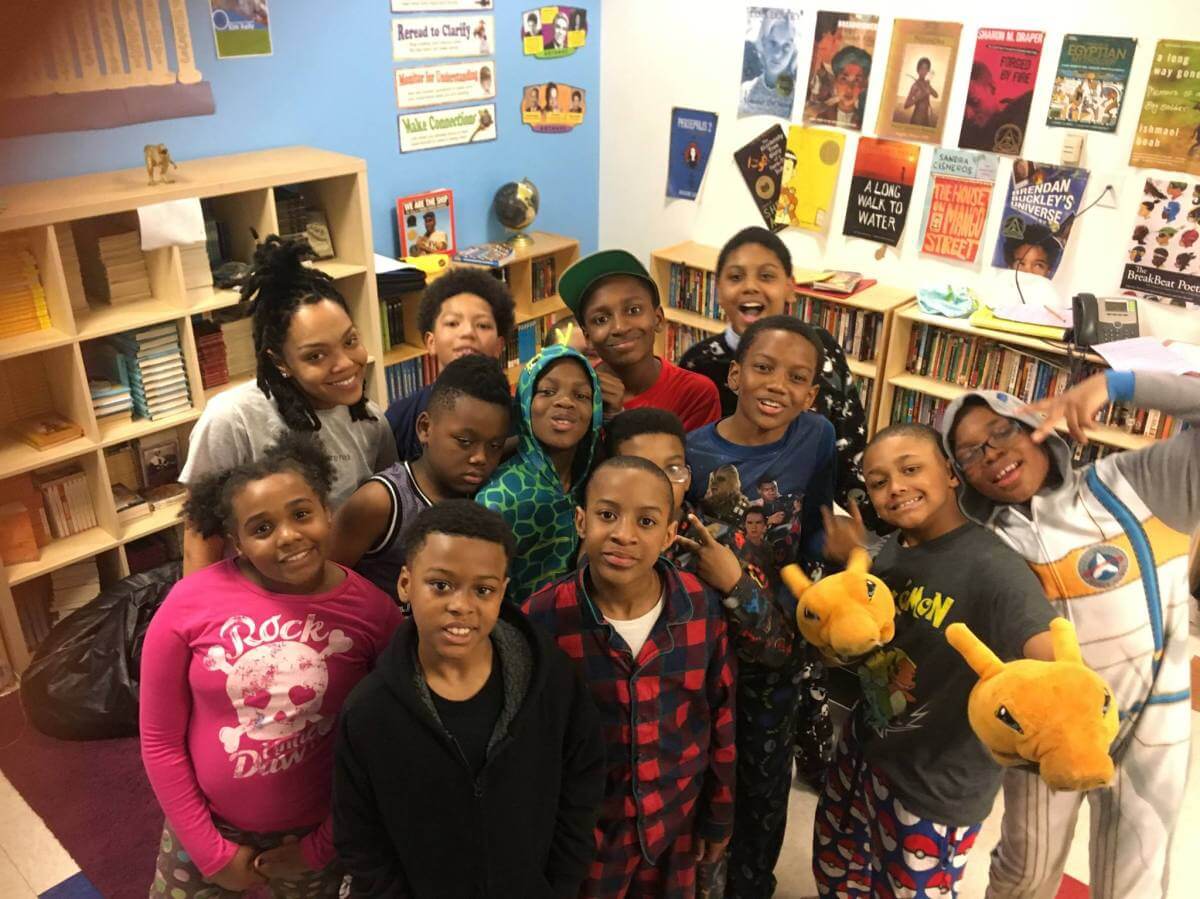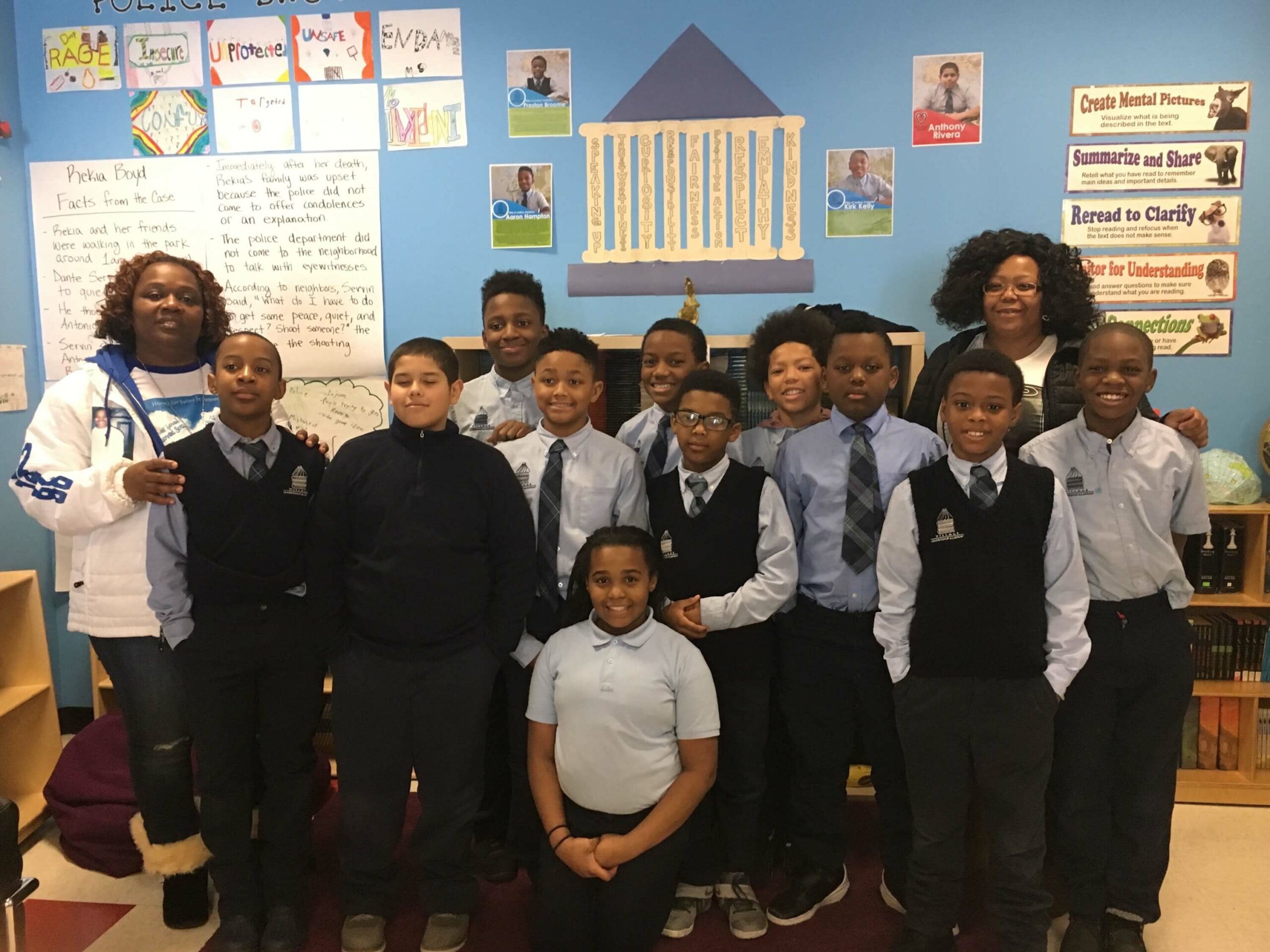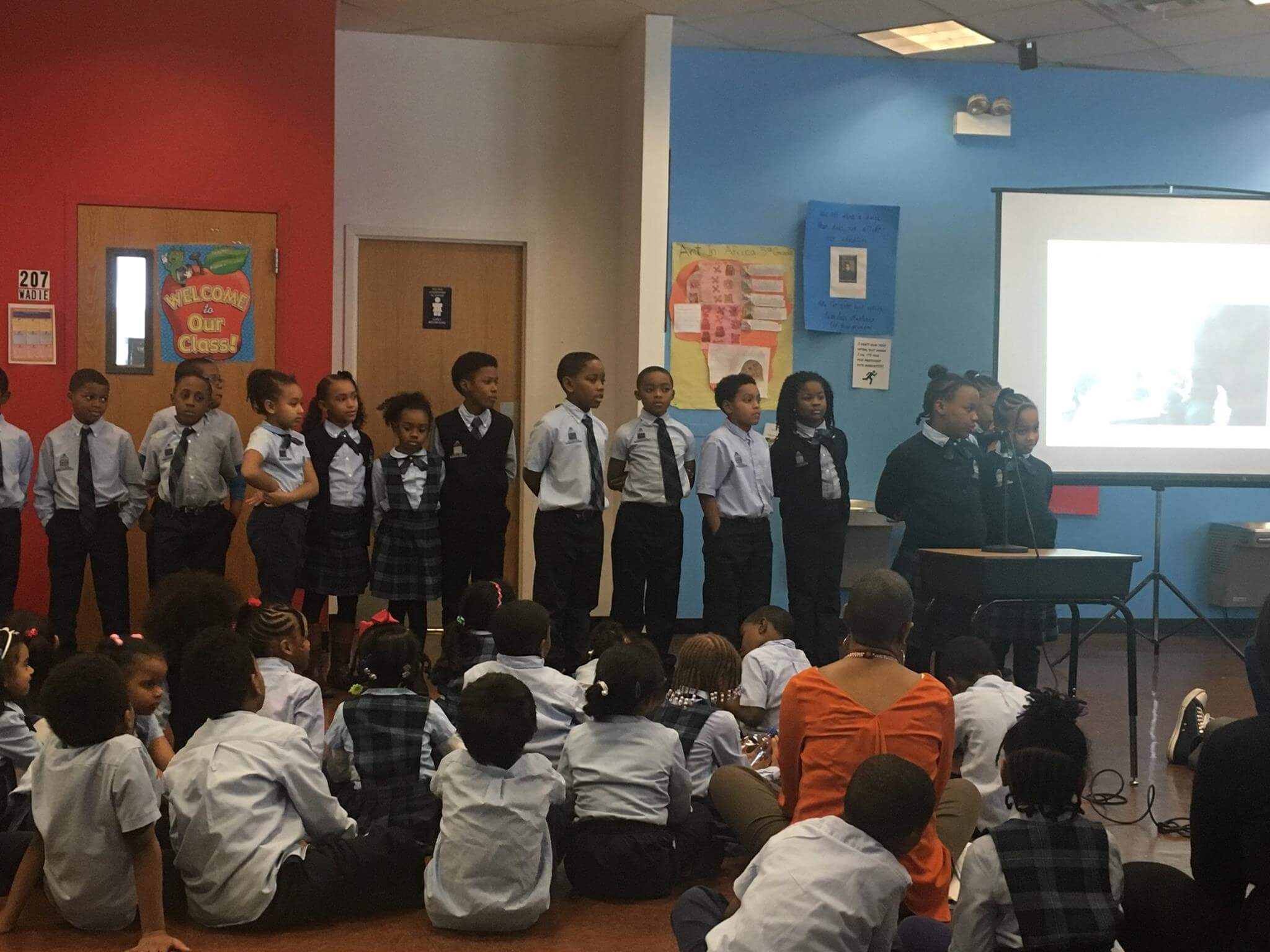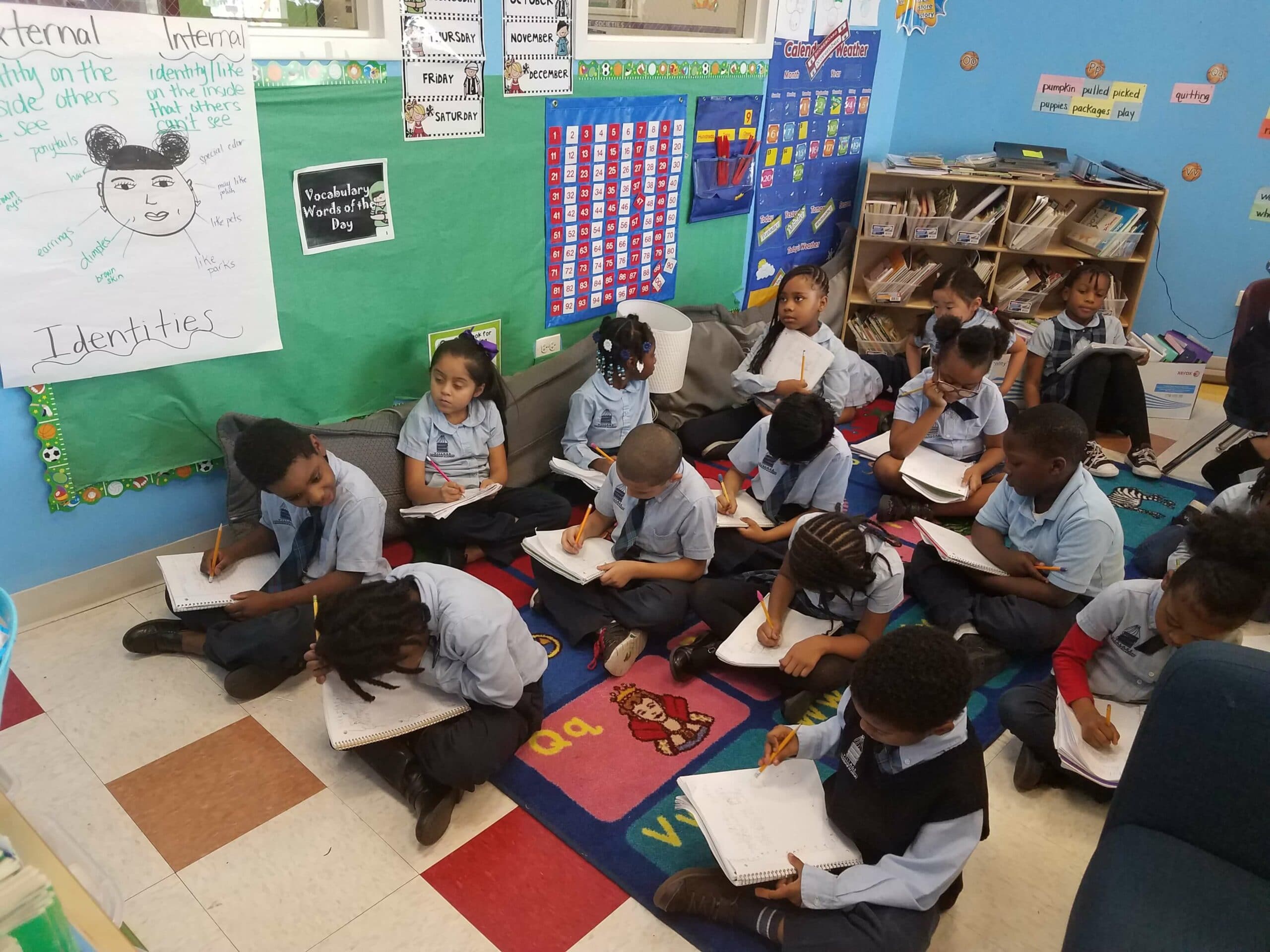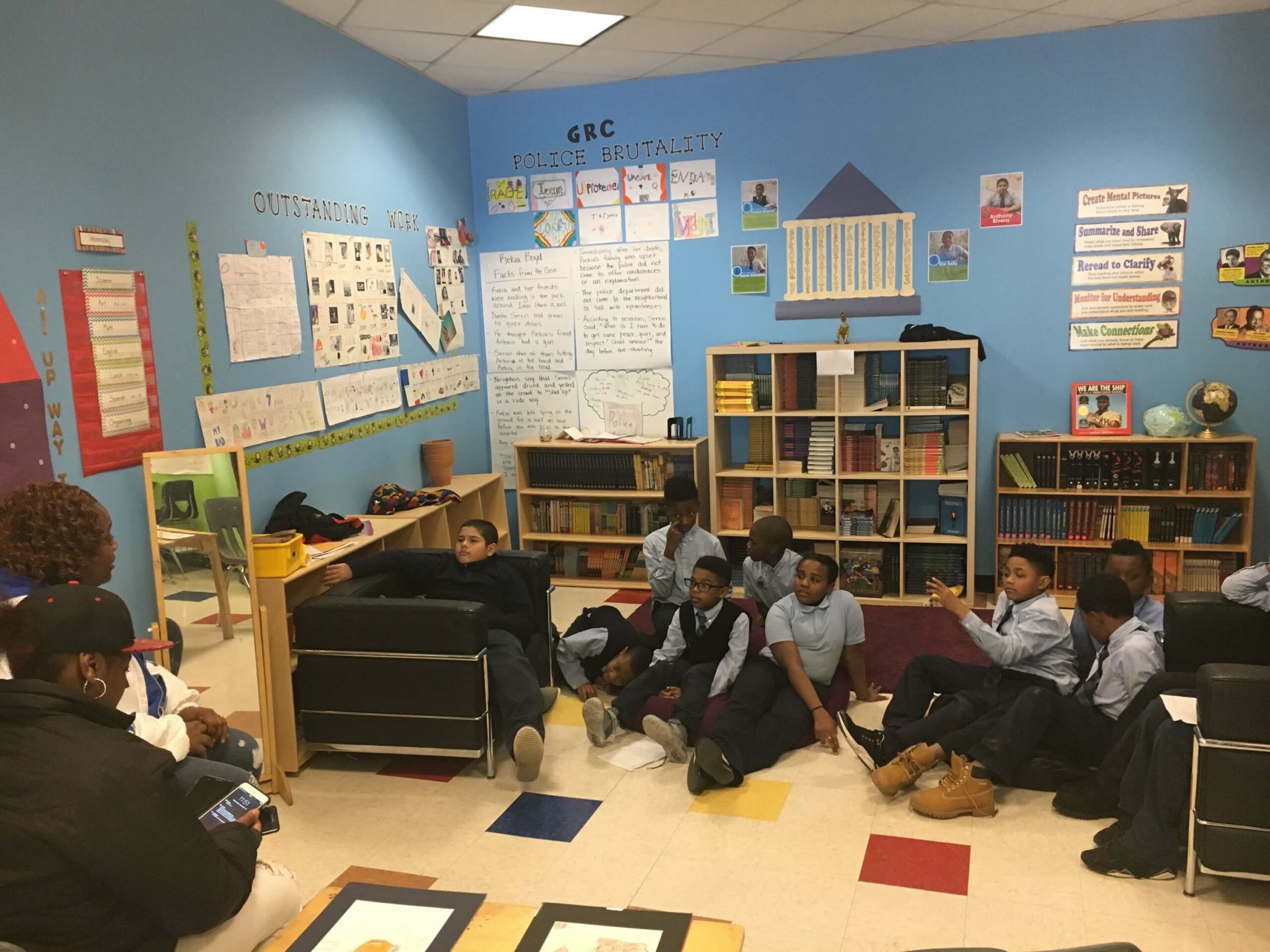Blog
Exploring the Historical Narrative of Art with Kerry James Marshall: Mastry
By: VLA Teacher, Wisdom Baty
The inability to solve that problem is a failure of imagination… it matters that my paintings are uncompromising in terms of the presentation of their blackness” Kerry James Marshall https://mcachicago.org/Stories/Video/Kerry-James-Marshall-Mastry
Visual art is the expression of cultural systems in society. The imagination and identity of the people in that society has to be highly developed in order for artwork to be produced and acknowledged on a grand scale.
By extension, art curriculum has to provide visual reflections for students.
I had to take a certain amount of art history classes when I received my BFA.
In these classes I was always reminded that my personal narrative was overlooked, and undervalued. In many art schools, the Western canon of art is the bar by which one is judged, while American society promotes the inundation of white imagery as the standard of beauty and artistic excellence. For many black and brown artists this experience is traumatic.
Under such circumstances, idealizing oneself thru art has historically been a crucial act of love and self preservation. To say I was inspired by the artworks in Kerry James Marshall’s Retrospective: Mastry is an understatement. In Mastry I was able to see myself, I saw love, and most importantly I saw artistic excellence from a black perspective.
As an art educator, this exhibition was the perfect teaching resource to bridge the gap between visual art, critical race theory, movement building, and the tumultuous racial climate in the U.S. Identifying and understanding Mr. Marshall’s stylistic approach to painting was an added bonus as students were able to view actual artworks on our class field trip.
Key to my assessment for the field trip was an artist report with accompanying selfies (photographs) that students took with their phones. There were three main goals to the artist report:
- Integration of literacy and observation in an artwork
- Identifying and documenting specific artwork in an exhibition
- Discussion of formal qualities and content of selected paintings
Highlighted synopsis of three images students wrote about:

Image 1: A Portrait of the Artist as a Shadow of His Former Self, 1980 Egg tempera on paper. This painting pivoted Mr. Marshall’s style of the black figure. Notice the complexities of the black hue, each bouncing off one another, allowing illumination to occur in the painting. With its form, frontal gaze, and minimalist use of the black monotone this image embodies art history’s self portraiture genre.
“I like this one because people may see someone in your life as invisible, maybe because of their color or their race. But I think everyone should be seen, everyone has their own light”.
Asha Andrews-Hutchinson, 6th grade

Image 2: Vignette Series, Wishing Well, 2010. Kerry’s vignettes paintings are based on a Romanic style that suggests feelings of love and the everyday, referencing Rococo history paintings.
“This painting stuck out to me because of its hues. It also stuck out to me because I noticed the women walking through the woods, and for some reason it caught my attention. The painting exhibits bright colors. Mostly the pink and brown caught my attention due to all the colors and its mixture. This picture seemed dynamic and active to me.”
Niyana Pitts, 6th grade

Image 3: School of Beauty, School of Culture, 2012. Acrylic and glitter on unstretched canvas. As a formal composition School of Beauty, School of Culture scope of size, perspective, and storytelling, addresses a revisionist narrative. Mr. Marshall paints a story of value, setting up standards of idealization from an African American cultural gaze.
The quotes and images below are passages taken from several artist reports by VLA students.
“This piece stood out to me and helps me realize the beauty in black hair. It shows the different textures and hair styles. Black hair is so beautiful when natural and people need to stop hating on it. I think this will open other people’s eyes and show them how amazing my culture is”.
Jadyn Miles, 7/8th grade
No matter the genre or medium one chooses, for black and brown youth having an idealized value attached to their reflection and identity is a form of resistance and self preservation. It is my goal to constantly provide reference points of artist who have unapologetically and radically taken on this “idea” of representation as it relates to cultural identity and positive refection. Some art educators might ask, how critical is this assessment? The simple answer lies in the false pedagogy that art education is mealy skill acquisition and artwork memorization. Important learning takes shape when valuable art education merges with cultural relevancy. This is a deliberate act of recognizing and implementing a student’s potential to imagine fully the value of oneself within culture.
In my 6-8th grade classes, students have begun copying selected works by Kerry James Marshall. The images below are the beginnings of identifying student’s reflection in history, as black and brown painters who can now copy from an internationally recognized contemporary Black Master! This simple, yet rare act of self preservation through art is the challenge of the 21st century art educator. A challenge that is ripe for the picking!
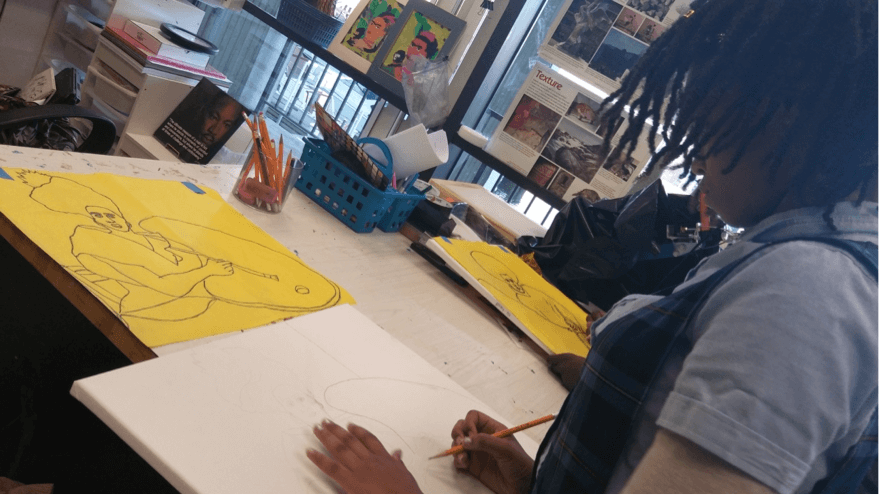
Enroll Now
Discover a partner in the future of your child. Enroll your scholar for the 2021-2022 school year today!
